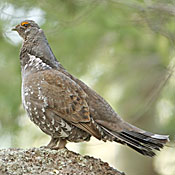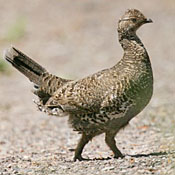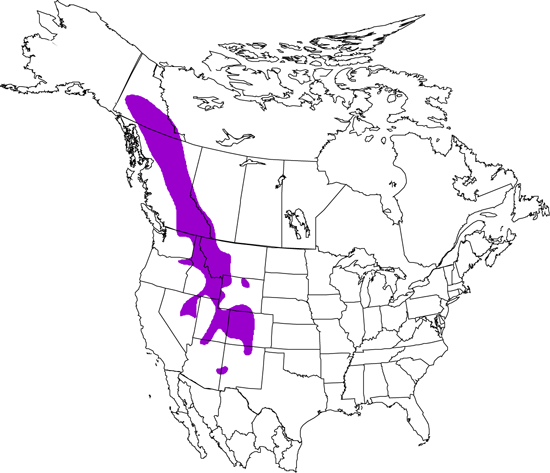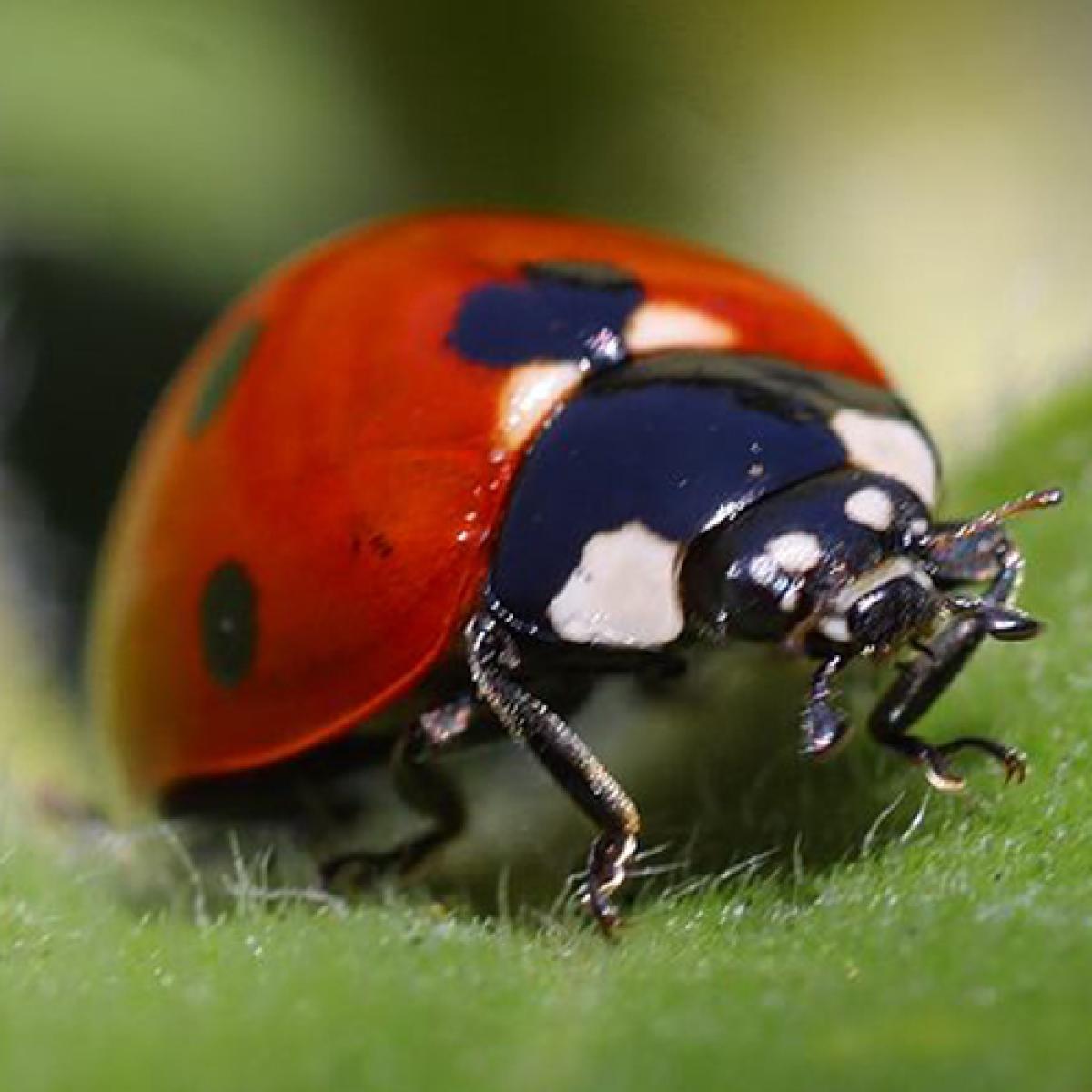Dusky Grouse
Dendragapus obscurus

Upland Ground

Length: 20 in. (51 cm )
Most frequently found on the ground of open coniferous or mixed coniferous-deciduous forests, this solitary grouse is confiding and easily approached. This behavior has led to its local name of "fools hen." They roost low in trees at night, and if startled, often will fly to medium levels of trees to escape. Its food is mainly leaves, pine needles, flowers, fruits and insects. The nest is a shallow depression on the ground and hidden by a log, dense bush or other low shrubbery.
The four-digit banding code is DUGR.
Bibliographic details:
- Article: Dusky Grouse
- Author(s): Dr. Biology
- Publisher: Arizona State University School of Life Sciences Ask A Biologist
- Site name: ASU - Ask A Biologist
- Date published: 13 Jul, 2017
- Date accessed: 18 October, 2025
- Link: https://askabiologist.asu.edu/activities/bird/dusky-grouse
APA Style
Dr. Biology. (Thu, 07/13/2017 - 15:38). Dusky Grouse. ASU - Ask A Biologist. Retrieved from https://askabiologist.asu.edu/activities/bird/dusky-grouse
Chicago Manual of Style
Dr. Biology. "Dusky Grouse". ASU - Ask A Biologist. 13 Jul 2017. https://askabiologist.asu.edu/activities/bird/dusky-grouse
MLA 2017 Style
Dr. Biology. "Dusky Grouse". ASU - Ask A Biologist. 13 Jul 2017. ASU - Ask A Biologist, Web. https://askabiologist.asu.edu/activities/bird/dusky-grouse
Be Part of
Ask A Biologist
By volunteering, or simply sending us feedback on the site. Scientists, teachers, writers, illustrators, and translators are all important to the program. If you are interested in helping with the website we have a Volunteers page to get the process started.






